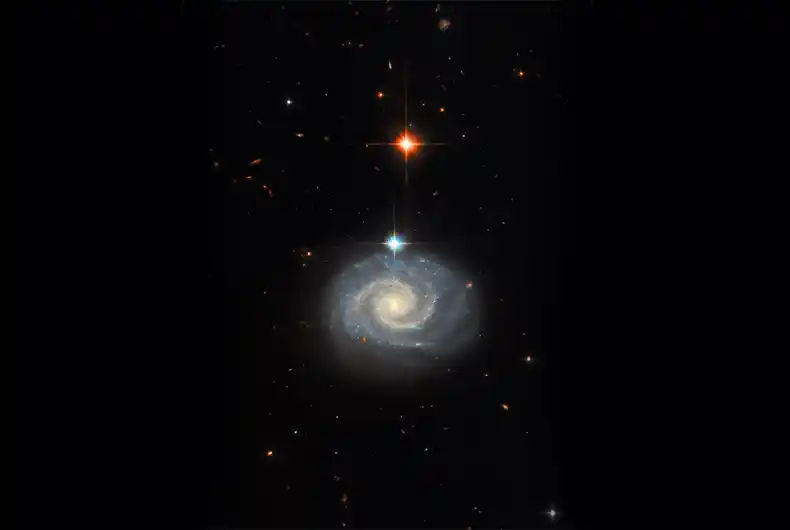


[This NASA Hubble Space Telescope image features a bright spiral galaxy known as MCG-01-24-014, which is located about 275 million light-years from Earth.
(Image: ESA/Hubble & NASA, C. Kilpatrick)]
Washington: The Hubble Space Telescope, managed by both NASA and European Space Agency, has captured a bright spiral galaxy which is not only aesthetically stunning but also peculiarity rich due to its emission of ‘forbidden’ light.
Named MCG-01-24-014, the galaxy is located about 275 million light-years from Earth.
Besides being a well-defined spiral galaxy, MCG-01-24-014 has an extremely energetic core known as an Active Galactic Nucleus (AGN) and is classified as a Type-2 Seyfert galaxy, the mission specialists from Hubble said.
Seyfert galaxies, along with quasars, host one of the most common subclasses of AGN.
While the precise categorisation of AGNs is nuanced, Seyfert galaxies tend to be relatively nearby and their central AGN does not outshine its host, while quasars are very distant AGNs with incredible luminosities that outshine their host galaxies.
There are further subclasses of both Seyfert galaxies and quasars. In the case of Seyfert galaxies, the predominant subcategories are Type-1 and Type-2.
Astronomers distinguish them by their spectra, the pattern that results when light is split into its constituent wavelengths.
The spectral lines that Type-2 Seyfert galaxies emit are associated with specific ‘forbidden’ emission lines. To understand why emitted light from a galaxy could be forbidden, it helps to understand why spectra exist in the first place.
Spectra look the way they do because certain atoms and molecules absorb and emit light at very specific wavelengths, according to European Space Agency.
The ‘forbidden’ light is a result of transitions in electron energies that, while highly improbable on Earth, can occur in the vastness of space, particularly within energetic galactic cores. This insight challenges and expands our understanding of quantum physics beyond terrestrial constraints.
Forbidden emission lines should not exist according to certain rules of quantum physics. But quantum physics is complex, and some of the rules used to predict it were formulated under laboratory conditions here on Earth, the team explained.
Under those rules, this emission is ‘forbidden’ -- so improbable that it’s disregarded. But in space, in the midst of an incredibly energetic galactic core, those assumptions don’t hold anymore, and the ‘forbidden’ light gets a chance to shine out toward us.
For all the latest News, Opinions and Views, download ummid.com App.
Select Language To Read in Urdu, Hindi, Marathi or Arabic.